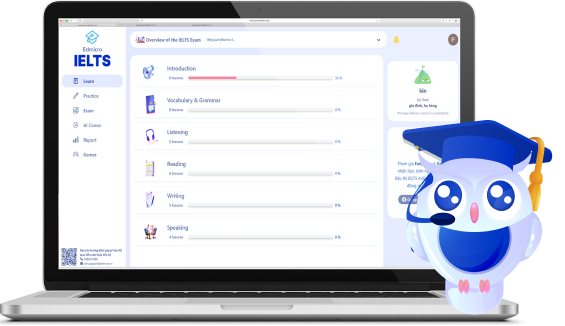Bài tập thì tương lai gần giúp bạn ôn luyện và ứng dụng lý thuyết, từ đó đánh giá mức độ hiểu kiến thức của bản thân. Các bài tập này cũng giúp bạn rút ra những kinh nghiệm để cải thiện tốc độ và tính chính xác khi làm bài.
Bài tập thì tương lai gần

Question 1. Mark the letter A, B, C, or D to indicate the correct answer to the following question.
I’m not happy that my parents ______ a time for me to come home in the evening.
A. has set
B. sets
C. set
D. setting
Question 2: Mark the letter A, B, C, or D to indicate the correct answer to the following question.
My dad ______ me with Lan, the girl living next door.
A. always comparing
B. is always comparing
C. always compare
D. has always comparing
Question 3: Mark the letter A, B, C, or D to indicate the correct answer to the following question.
I ______ today. I’m on holiday.
A. won’t work
B. don’t work
C. haven’t worked
D. am not working
Question 4: Mark the letter A, B, C, or D to indicate the correct answer to the following question
People ______ English in Jamaica.
A. is speaking
B. are speaking
C. speak
D. speaks
Question 5: Mark the letter A, B, C, or D to indicate the correct answer to the following question
Archie ______ his computer at the moment.
A. hasn’t used
B. didn’t use
C. don’t use
D. isn’t using
Question 6: Mark the letter A, B, C, or D to indicate the correct answer to the following question
Tom ______ at my house after school on Fridays.
A. is playing
B. has played
C. plays
D. play
Question 7: Mark the letter A, B, C, or D to indicate the correct answer to the following question.
My brother ______ TV right now because he has to do his homework.
A. isn’t watching
B. doesn’t watching
C. doesn’t watch
D. don’t watch
Question 8: Mark the letter A, B, C, or D to indicate the correct answer to the following question.
You won’t find Jerry at home right now. He ______ in the library.
A. studies
B. has studied
C. is studying
D. study
Question 9: Mark the letter A, B, C, or D to indicate the correct answer to the following question.
It ______ quite hard – perhaps we shouldn’t go out tonight.
A. snow
B. is snowing
C. are snowing
D. snows
Question 10: Mark the letter A, B, C, or D to indicate the correct answer to the following question.
Look! Junko ______ into the water.
A. are jumping
B. is jumping
C. jump
D. jumps
Question 11: Mark the letter A, B, C, or D to indicate the correct answer to the following question.
I sometimes do the shopping ______ my mother is busy.
A. after
B. but
C. when
D. while
Question 12: Mark the letter A, B, C, or D to indicate the underlined part that needs correction in the following question.
At the moment, the authority does nothing with the tension escalating in the south of the remote town.
A. with
B. the south
C. does
D. escalating
Question 13: Mark the letter A, B, C, or D to indicate the underlined part that needs correction in the following question.
According to researches, women live usually longer than men.
A. researches
B. live usually
C. than
D. According
Question 14: Mark the letter A, B, C, or D to indicate the correct answer to the following question.
Every day, my mother cooks, washes the clothes and cleans the house but today is Mother’s Day and she ______ any housework now.
A. doesn’t do
B. don’t do
C. isn’t doing
D. is doing
Question 15: Mark the letter A, B, C, or D to indicate the correct answer to the following question.
My mum usually ______ the laundry but she is busy today. She ______ on an urgent report at the moment.
A. do/works
B. does/works
C. do/is working
D. does/is working
Question 16: Mark the letter A, B, C, or D to indicate the correct answer to the following question.
He ______ TV in the living room right now.
A. watches
B. am watching
C. have been watching
D. is watching
Question 17: Mark the letter A, B, C, or D to indicate the correct answer to the following question.
We ______ next weekend.
A. will camp
B. are going camping
C. camping
D. camp
Question 18: Mark the letter A, B, C, or D to indicate the correct answer to the following question.
At the weekend, May usually ______ shopping with her mom.
A. goes
B. went
C. has gone
D. is going
Question 19: Mark the letter A, B, C, or D to indicate the correct answer to the following question.
I ______ with my friend at the moment.
A. chats
B. have chatted
C. am chatting
D. chat
Question 20: Mark the letter A, B, C, or D to indicate the correct answer to the following question.
Thieves usually ______ into houses through windows.
A. sneak
B. are sneaking
C. sneaks
D. will sneak
Question 21: Mark the letter A, B, C, or D to indicate the correct answer to the following question.
I ______ in the room right now.
A. am
B. am being
C. was being
D. have been being
Question 22: Mark the letter A, B, C, or D to indicate the correct answer to the following question.
They usually ______ a lot of beautiful photos.
A. takes
B. took
C. take
D. taking
Question 23: Mark the letter A, B, C, or D to indicate the correct answer to the following question.
My younger brother never ______ noodles. This kind of food makes him feel ill.
A. is eating
B. eats
C. eat
D. eating
Question 24: Mark the letter A, B, C, or D to indicate the correct answer to the following question.
My friend ______ an unusual hobby: learning foreign languages.
A. have
B. haves
C. having
D. has
Question 25: Mark the letter A, B, C, or D on your answer sheet to indicate the correct answer to the following question.
Australia _____ a range of different landscape, including urban areas, mountain ranges, desert and rainforest.
A. will have
B. have
C. is having
D. has
ĐÁP ÁN:
- C
- B
- D
- C
- D
- C
- A
- C
- B
- B
- C
- C
- B
- C
- D
- D
- B
- A
- C
- A
- A
- C
- B
- D
- D
Lý thuyết thì tương lai gần
Thì tương lai gần (Near future tense) là thì diễn tả một hành động trong tương lai.

Cách sử dụng
- Dùng để diễn tả một sự việc, hành động trong tương lai đã được lên kế hoạch hoặc dự định từ trước.
Ví dụ: They are going to buy a new car next month. (Họ sẽ mua chiếc xe mới vào tháng sau.)
- Dùng để diễn tả một dự đoán có căn cứ cụ thể.
Ví dụ: Look at those dark clouds! It is going to rain soon. (Nhìn những đám mây đen kia! Sắp tới sẽ có mưa.)
Xem thêm: Bài Tập Thì Tương Lai Đơn Từ Cơ Bản Đến Nâng Cao
Công thức thì tương lai gần (Near future tense)
| Câu khẳng định | S + am/ is/ are + going + to V |
| Câu phủ định | S + am not/ isn’t/ aren’t + going + to V |
| Câu nghi vấn | Am/Is/Are + S + going to V?Answer:→ Yes, S + am/ is/ are.→ No, S + am not/ isn’t/ aren’t. |
Dấu hiệu nhận biết
Bạn có thể nhận biết được thì tương lai gần qua các từ, cụm từ sau trong câu:
- in + khoảng thời gian (in 5 weeks: trong 5 tuần nữa)
- tomorrow
- Next week/ next month/ next year….
- Câu mệnh lệnh: Look!, Watch out!,…
Phân biệt thì tương lai gần và tương lai đơn
| Tiêu chí | Tương Lai Đơn (will) | Tương Lai Gần (be going to) |
|---|---|---|
| Công thức | S + will + V (nguyên mẫu) | S + be (am/is/are) + going to + V |
| Ý định | Quyết định ngay tại thời điểm nói | Kế hoạch/dự định đã có trước khi nói |
| Dự đoán | Dựa vào ý kiến cá nhân, cảm nhận, không có bằng chứng rõ ràng | Dựa vào bằng chứng thực tế, hiện tại |
| Dấu hiệu nhận biết | Perhaps I think Tomorrow | In + khoảng thời gian Tomorrow Next day Next + time |
Các dạng bài tập thì tương lai gần
Dạng 1: Chọn đáp án đúng
Ví dụ:
1. What are you going to do this weekend?
A. I’m going to visit my parents.
B. I visited my parents.
C. I will visit my parents.
Dạng 2: Viết câu hoàn chỉnh sử dụng thì tương lai gần
Ví dụ: The weather forecast says it ____ be sunny tomorrow.
Dạng 3: Sửa lỗi sai
Ví dụ: She is going to visit her grandparents next week.
Xem thêm: Thì Tương Lai Tiếp Diễn (Future Continuous) | Tổng Hợp Chi Tiết Lý Thuyết & Bài Tập
Hướng dẫn làm bài tập thì tương lai gần
Dạng 1:
- Xác định ngữ cảnh của câu.
- Chọn đáp án phù hợp với ngữ cảnh và thể hiện ý nghĩa tương lai gần.
Dựa vào đó, ở 2 ví dụ trên, chúng ta có thể thấy ngữ cảnh của cậu là bạn sẽ làm gì vào this weekend – cuối tuần, mang tính dự định trước. Vì thế, đáp án đúng là thì tương lai gần: A. I’m going to visit my parents.
Dạng 2:
- Vận dụng cấu trúc của thì tương lai gần:
- S + am/is/are + going to + V-inf
- Chọn động từ phù hợp với ngữ cảnh và ý nghĩa của câu.
Đáp án ở câu ví dụ sẽ là The weather forecast says it will be sunny tomorrow. Ở đây, chúng ta sử dụng thì tương lai đơn thay vì tương lai gần. Bởi will be thể hiện dự đoán về thời tiết trong tương lai, không phải ý định.
Dạng 3:
- Xác định lỗi sai trong câu.
- Sửa lỗi sai bằng cách sử dụng cấu trúc và cách dùng đúng của thì tương lai gần.
Trong câu ví dụ She is going to visit her grandparents next week. Chúng ta sửa lỗi sai “am going to” thành “will” vì “next week” thể hiện thời gian tương lai đơn thuần, không có ý nghĩa dự định.
Xem thêm: singing ielts speaking part 1
Edmicro IELTS đã giới thiệu với bạn bài tập thì tương lai gần có đáp án. Hy vọng bạn có thể rút ra những kinh nghiệm từ các bài tập này và làm tốt hơn nữa các bài tập khác.
Xem thêm:











